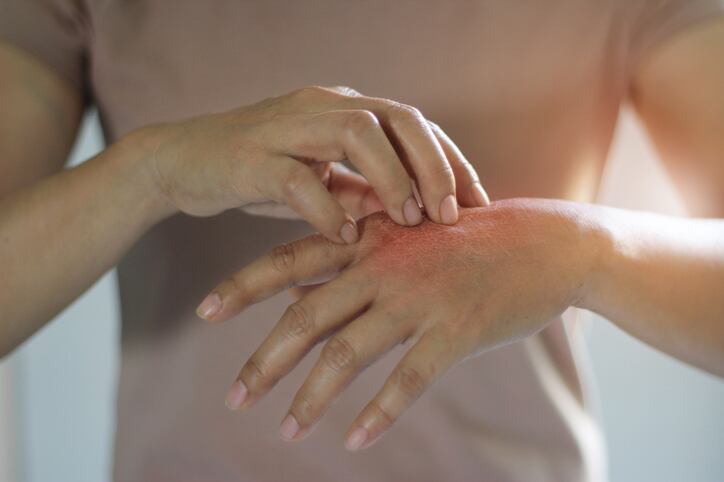Adopted on May 7, 2021, the SCCS’s final Scientific Advice on formaldehyde labelling for cosmetics containing formaldehyde releasing substances concluded the current threshold of 0.05% was not low enough and must be reduced to 0.001% (10 ppm). And this lower threshold, it said, had to be applied to the total free formaldehyde, irrespective of whether a product contained one or more formaldehyde releaser(s).
“The SCCS considers that the present threshold does not sufficiently protect consumers sensitised to formaldehyde from exposure to free formaldehyde from formaldehyde releasers,” the advice read.
Low levels of formaldehyde releasers can trigger allergic contact dermatitis
The SCCS said there was “sufficient evidence” to suggest consumers susceptible to allergic contact dermatitis (ACD) were not adequately protected with the current threshold – a conclusion supported by several ROAT [repeated open application test] studies.
Reducing the current threshold by a factor of 50, however, would “protect the vast majority of consumers sensitised to formaldehyde”, the Committee wrote.
Whilst data in these ROAT studies had been collated for leave-on cosmetics, the SCCS said “it seems justified to also apply the recommended threshold level to rinse-of cosmetics” too, given studies on other allergens like methylisothiazolinone indicated similar ACD reactions in ROAT studies for rinse-off and leave-on.
However, the SCCS clarified: “This advice only addresses skin sensitisation to formaldehyde as liberated by formaldehyde releasers. Skin sensitisation induced by formaldehyde releasers themselves, and the amount of cross-reactivity between formaldehyde releasers and formaldehyde in patch tests or other tests is outside the scope of this advice.”
Background: Formaldehyde prohibited in EU; labelling required for formaldehyde releasers
Formaldehyde was classified a carcinogen and category-one skin sensitiser, meaning it could cause an allergic skin reaction, in 2014 by the European Commission.
In 2019, it was delisted as a preservative from Annex V of the EU Cosmetics Regulation No. 1223/2009 and added it to the list of substances prohibited in cosmetic products (Annex II). Formaldehyde releasers, however – substances that release formaldehyde to achieve a preserving function on the final cosmetic product – were still able to be used in cosmetics. These substances just had to be carry a ‘contains formaldehyde’ warning when levels of the substance were found in the final product at concentrations above 0.05%.
However, in 2020, the Commission received “additional information” suggesting formaldehyde exposure could cause contact dermatitis in persons with formaldehyde allergy below this threshold. This led to questions on current provisions, the SCCS said, and prompted its latest Scientific Advice.

